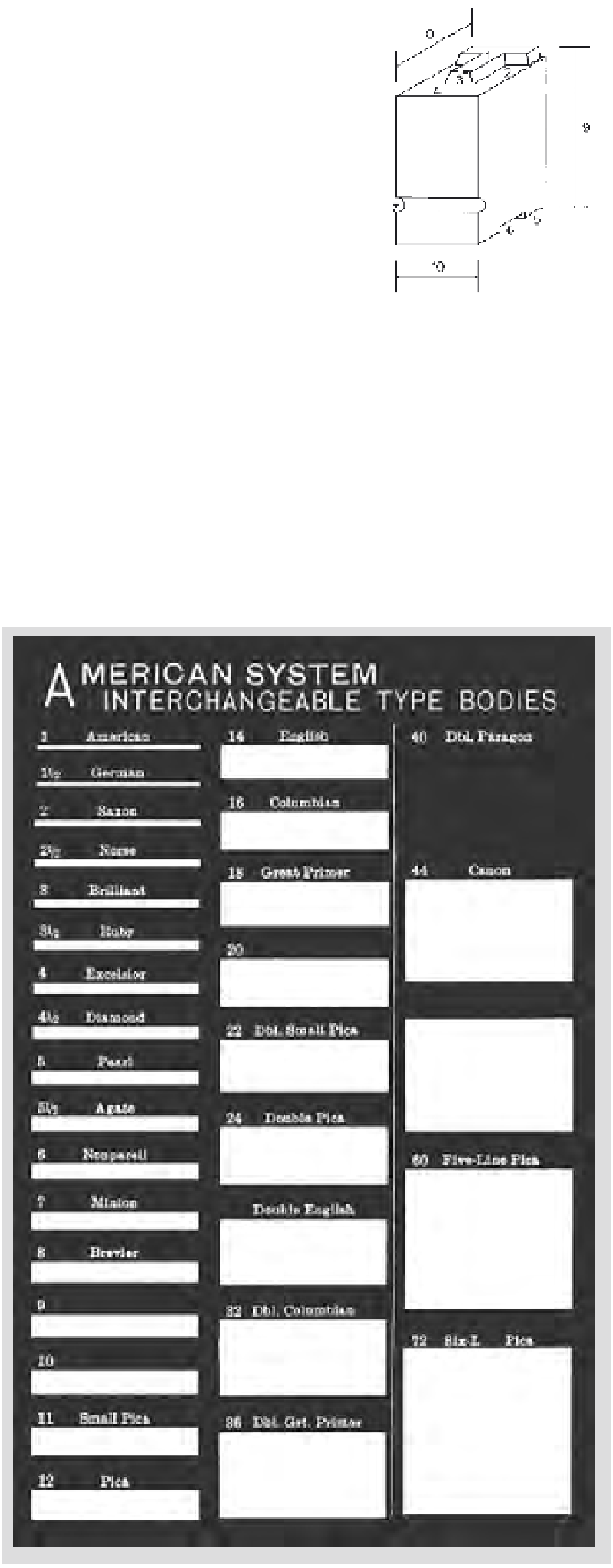Graphics Reference
In-Depth Information
1. Face (printing
surface)
2. Counter
3. Beard
4. Shoulder
5. Feet
6. Groove
7. Nick
8. Point size
(body size)
9. Type-high
(.918” height)
10. Set width
TYPOGRAPHIC MEASUREMENT
2-35
Our measurement system for typography was originally developed for
the handset metal type invented by Johann Gutenberg around 1450.
The rectangular metal block of type (Fig.
2-35
) has a raised letterform
on top, which was inked to print the image.
Metal type measurement
The small sizes of text type necessitated the development of a
measuring system with extremely fine increments. There were no
standards for typographic measurements until the French type
designer and founder Pierre Simon Fournier le Jeune introduced his
point system of measurement in 1737. The contemporary American
measurement system, which was adopted during the 1870s, has two
basic units: the point and the pica (Fig.
2-36
). There are approximately
seventy-two points in an inch (each point is 0.138 inches) and twelve
points in a pica. There are about six picas in an inch.
Metal type exists in three dimensions, and an understanding of
typographic measurement begins with this early technology. The depth
of the type (Fig.
2-35
, caption 8) is measured in points and is called
the point size or body size. All metal type must be the exact same
height (Fig.
2-35
, caption 9), which is called type-high (0.918 inch).
This uniform height enabled all types to print a uniform impression
upon the paper. The width of a piece of type is called the set width
(Fig.
2-35
, caption 10) and varies with the design of each individual
letter. The letters
M
and
W
have the widest set width;
i
and
I
have the
narrowest. The length of a line of type is the sum of the set width of all
the characters and spaces in the line. It is measured in picas.
Before the development of the point and pica system, various
sizes of type were identified by names, such as
brevier
,
long primer
,
and
pica
; these became 8-point, 10-point, and 12-point type. The
chart in Figure
2-37
, reproduced from a nineteenth-century printers'
magazine, shows the major point sizes of type with their old names.
Type that is 12 point or less is called body type and is primarily
used for paragraphs of text. Sizes above 14 point are called display
type, and they are used for titles, headlines, signage, and the like.
Traditional metal type had a range of text and display sizes in
increments from 5 point to 72 point (Fig.
2-38
). The measurement of
point size is a measurement of the metal block of type including space
above and below the letters; therefore, one cannot measure the point
size from printed letters themselves. This is sometimes confusing.
Refer to the labels for x-height, cap height, and point size on Figure
2-38
and observe that the point size includes the cap height plus a
spatial interval above and below the letters.
2-36
2-37
Reproduced actual size from the
Inland Printer
, April 1885.














